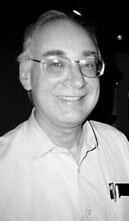
Search
SPARKS:2001 V1/Q1
Please Meet: Sheldon Apsell
In each issue of SPARKS, we will introduce you to one person who is contributing to the success of the Academy. In this issue, we are pleased to introduce you to the Board Chair, Sheldon Apsell.
 SPARKS: What do you envision for the Academy in the future?
SPARKS: What do you envision for the Academy in the future?
Dr. Apsell: I see two major goals for the Academy of Applied Science. First, using the Junior Science and Humanities Symposia as a model, I would like to expand our other programs and initiatives from a regional to a national level. Second, I want to see the Academy grow to achieve national and even international recognition in the areas of innovation, invention, and education.
SPARKS: How did you personally become interested in the Academy?
Dr. Apsell: I had no choice [laughing]. Bob Rines drafted me. I met Bob when I was in graduate school. He and I, along with four other weekend pilots, co-owned an airplane.
SPARKS: Do you still fly your own plane?
Dr. Apsell: Yes. Now I have two planes: a twin Beechcraft for business and another for my hobby, aerobatic flying. These weekend competitions bring together pilots who get placed in one of five levels. You may fly for only ten minutes, but it's an exhilarating activity.
SPARKS: Does your family enjoy flying as well?
Dr. Apsell: My daughter, who is at college in Ithaca, N.Y., sees me as a taxi service.
SPARKS: Let's go to your educational background. What schools and colleges have you attended?
Dr. Apsell: I went to local public schools in Mamoroneck, N.Y., where I grew up, undergraduate studies at MIT, followed by a Ph.D. in Physics at Brandeis.
SPARKS: Tell us about your business career.
Dr. Apsell: After Brandeis I worked for a company that dealt in satellite reconnaissance. During that period of the early 1970's I got my first patent with the assistance of Bob Rines as patent attorney.
SPARKS: What was the patent for?
Dr. Apsell: It was a digital pager which would display the message. We were ahead of the times. Unfortunately, the patent ran out before people were ready for our technology.
SPARKS: Where did your career take you next?
Dr. Apsell: I got involved in the electronic intelligence gathering world which I left in 1974 to become head of product development at ATP, a leading security firm.
SPARKS: And next?
Dr. Apsell: In 1979 I went to Micro-Logic as a developer of electronic products.
SPARKS: Wasn't that about the time you got your most noted patent?
Dr. Apsell: Yes, in 1982 for Lojack, a system for tracing stolen cars, which is now used worldwide. Since 1985 we have had no competitors, and I never stay up at night worrying about a lack of car thieves.